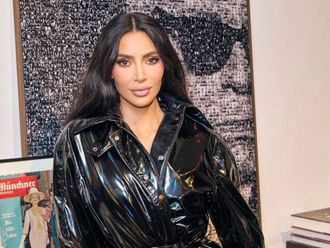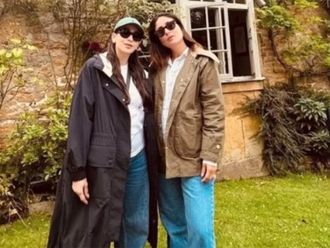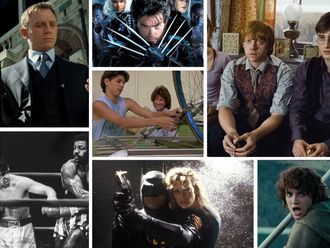
It takes a certain amount of willful cluelessness to pilfer a designation meant to underscore the extreme inequality of a historical epoch — one in which the rich got obscenely richer and the poor got desperately poorer — and reappropriate it as the name of a vehicle for wealth porn. And yet here we are with the escapist new period drama ‘The Gilded Age,’ which takes as its chief concern the pearl-clutching clash between old and new money in 19th-century New York high society.
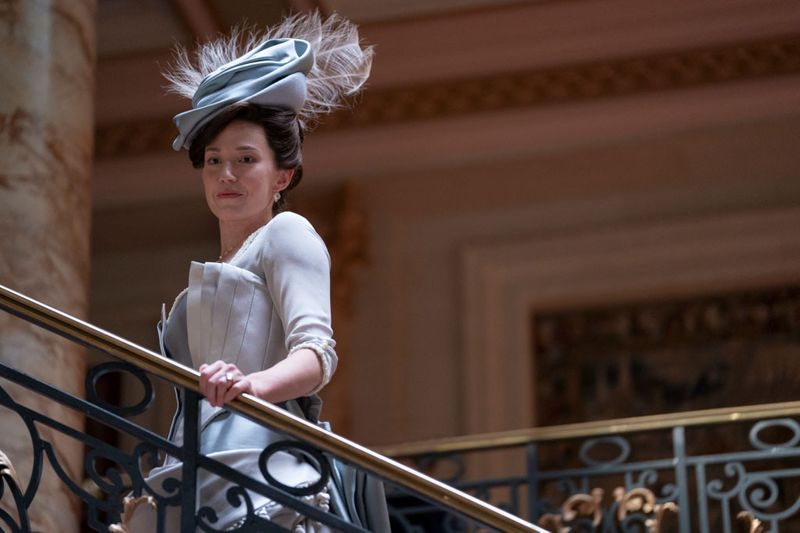
Creator Julian Fellowes, who delivers his long awaited follow-up to ‘Downton Abbey’ here, is naturally taken by the surface, rather than the rot underneath. And so his cameras sweep and gawk over all that an HBO budget can buy: homes that could be mistaken for a royal palace; jewels that would induce mass hysteria in magpies; a beaded cape, worn to the symphony, that makes the fairy-tale train of Princess Diana’s wedding gown look like wrinkled schmatta.
The series’s headlining star is Carrie Coon, who’s trapped in an iciness from which Fellowes barely lets her stir. (She’s hardly alone; the sprawling cast is chockablock with beloved actors, nearly all saddled with frustratingly underwritten characters.) Coon plays Bertha Russell, a relentless and monomaniacal social climber who, a century later, could’ve been an especially coldblooded CEO of a Fortune 500 firm. But as a woman of the 1880s, Bertha must channel her energies into raising the standing of her family. With her railroad-tycoon husband George (Morgan Spector), she schemes to carve out, with a bejeweled shiv if necessary, a place for the Russells among the fading but still venomously snobby Upper East Side aristocracy.
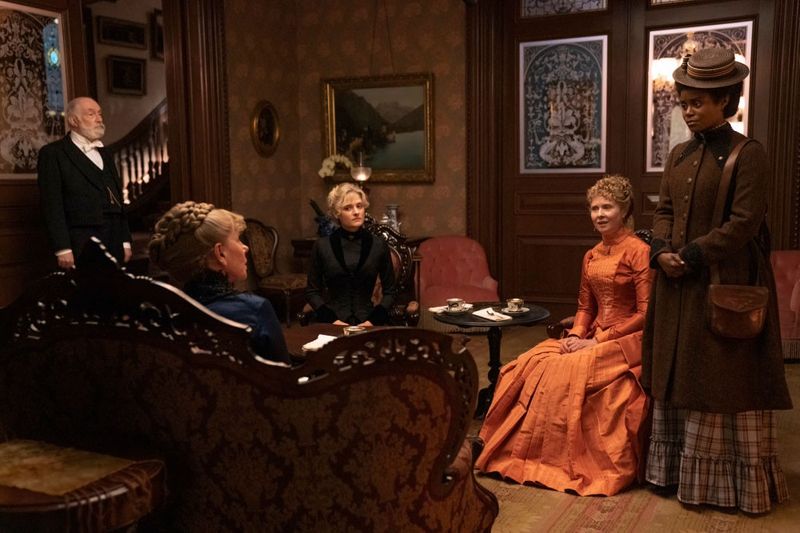
‘The Gilded Age’ opens with Bertha, George and their younger child, Gladys (Taissa Farmiga), moving into their newly built, architecturally defiant manor on 61st Street. Their haughty neighbours across the street, the widowed Agnes van Rhijn (Christine Baranski) and her spinster sister Ada Brook (Cynthia Nixon), won’t deign to step foot in the Russells’ home in the 80-minute pilot, nor in the four episodes after that. (The first season consists of nine installments.) But as we learn from the get-go, the tight-lipped Agnes, a native of rural Pennsylvania, only married into old money herself, and her unhappy union, though short on details, is testament to the fact that the moldiness of a fortune has no bearing on the morality of its owner. You might expect Fellowes to do something compelling or layered with this naked hypocrisy, but you’d be mistaken.
The younger generation isn’t so tangled up in the prejudices of their parents. Agnes’s son, Oscar (Blake Ritson), who inherited his mother’s sharp tongue, would like nothing more than Gladys’s hand — and the purse strings that come with it. (He plans out an entire lifetime with his would-be wife, an innocent he presumes would be easily kept in the dark about his unconventional pursuits.) Even bolder are the transgressions of Agnes and Ada’s orphaned niece Marian (Louisa Jacobson, the youngest of Meryl Streep’s daughters), a recent arrival to New York stuck in an impossible situation: having to marry among her aunts’ upper crust without the deep pockets to make her a desirable candidate for the merger of assets that such suitors would seek.
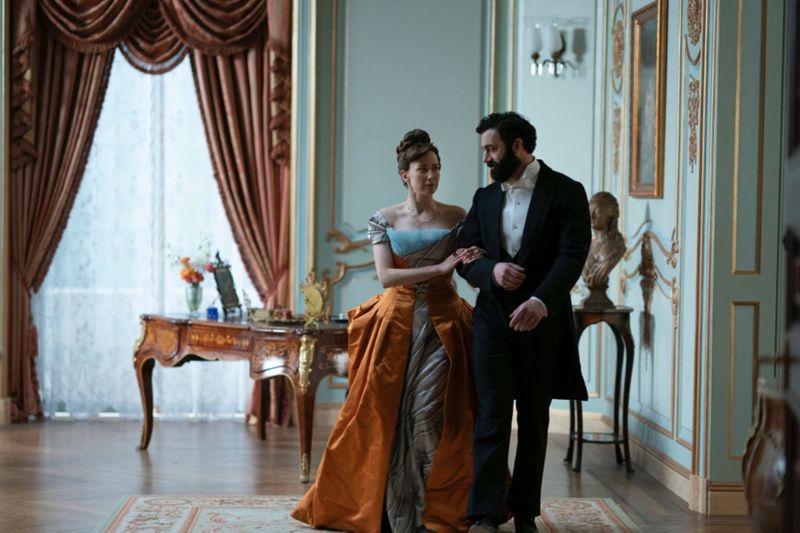
Marian comes to New York with a vague goal of pursuing a profession. She’s quickly outpaced in ambition and achievement by Peggy (Dene Benton), a fellow passenger on the train from Pennsylvania who, by happenstance, ends up working as Agnes’s secretary while chasing her literary dreams. Like so many on ‘The Gilded Age,’ Peggy harbors a secret — one that explains why she prefers the servants’ quarters at the van Rhijn-Brooks estate, where the maids bristle that a Black woman like herself holds a superior position in the household, to the Brooklyn home of her parents (Audra McDonald and John Douglas Thompson). For the minor characters, such as the domestics who gather to gossip around a table as on ‘Downton,’ the intimations of skeletons in the closet tighten the occasional slack in the pacing. But for major players like Agnes and Peggy, they serve as impediments to much-needed character development.
It’s difficult to parse what exactly ‘The Gilded Age’ adds to HBO’s roster of shows about terrible rich people, the latter a symptom of our own gilded era, in which the most consistent protest we can seemingly muster up is to make TV shows about how miserable our overlords must be on their private planes. Fellowes chronicles his characters’ myopia, but he doesn’t quite critique it; he wants us to care about whether Bertha will get a chance to meet and curry the favour of the fabled Mrs. Astor, the grande dame of the antique elite. (In its worst moments, ‘The Gilded Age’ just feels like an old-timey version of ‘Mean Girls.’)
Perhaps the female audience is supposed to take delight in the fact that the power players in this world are mostly women, but that skewed vision of history only emphasises how much these initial chapters soft-pedal the noxious and manifold bigotries of the era. Unconvincingly, the only victims of the runaway capitalism of the late 19th century seem to be other rich people, punished for their underhanded avarice.

Apart from Peggy, whose journeys between the Black and White New Yorks provide some novelty, there is hardly anyone to root for or invest in. And that’s crucial not because we always need shows with characters worth championing — ‘Succession,’ for example, is a fantastically acidic show with no redeemable people in it — but because Fellowes doesn’t seem to understand how unsympathetic his creations actually are.
There’s no doubt that years of research went into crafting ‘The Gilded Age,’ and yet there’s a certain American je ne sais quoi, as well as a sense of historical specificity, that’s conspicuously lacking. The divisions between old and new money that drive the show, for instance, were surely informed by ethnic, denominational and ideological differences. (Discrimination against newer waves of European immigration helped fuel the inequities of the actual Gilded Age — a reality hardly alluded to in the series.) But Fellowes is quick to resort to pablum about New York being a “collection of villages” without exploring why so many invisible walls have been erected within one city; he’d rather focus on the women’s cattiness. Meanwhile, too-modern touches, like the power coupling of the Russells, distract like Pollock-esque paint splotches on a John Singer Sargent portrait.
But if ‘The Gilded Age’ isn’t a serious show, it’s not a reliably entertaining one, either. Sure, the sets and costumes and gewgaws are fun to look at. But it’s also dispiriting to watch so many talented stars get so little meat to chew on. Of particular disappointment is Baranski, whose Agnes is meant to take over from Maggie Smith’s Dowager Countess role. She’s given a couple of fun lines — her deadpan delivery of “I haven’t been thrilled since 1865” is especially great — but the show is packed with so many characters and story lines that hardly anyone gets to breathe or make an impact. In the end, Fellowes can only offer what he’s most fascinated by: the gleaming gilt.
—————————
Don’t miss it!
‘The Gilded Age’ is out on OSN in the UAE




